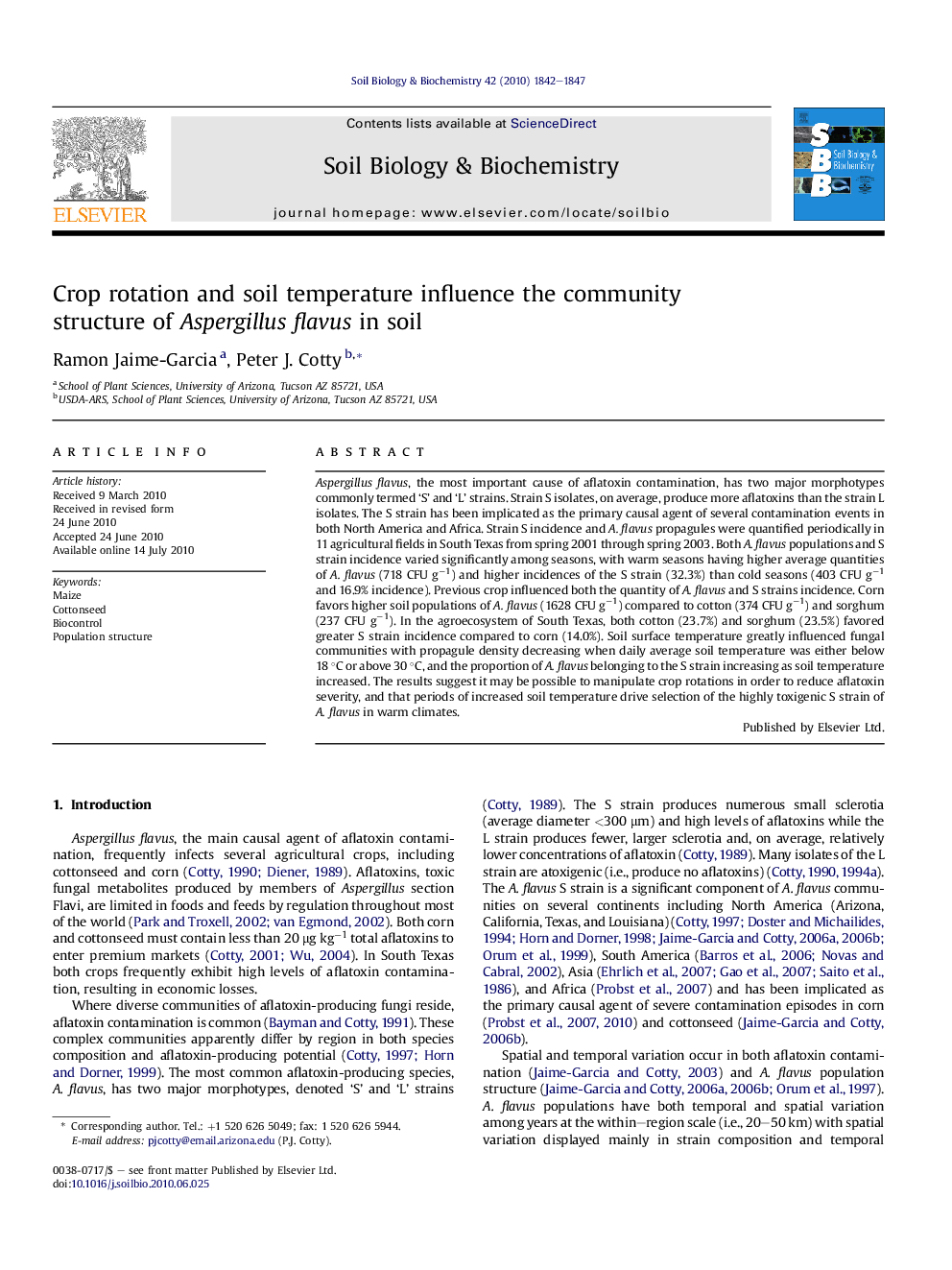| Article ID | Journal | Published Year | Pages | File Type |
|---|---|---|---|---|
| 2025421 | Soil Biology and Biochemistry | 2010 | 6 Pages |
Aspergillus flavus, the most important cause of aflatoxin contamination, has two major morphotypes commonly termed ‘S’ and ‘L’ strains. Strain S isolates, on average, produce more aflatoxins than the strain L isolates. The S strain has been implicated as the primary causal agent of several contamination events in both North America and Africa. Strain S incidence and A. flavus propagules were quantified periodically in 11 agricultural fields in South Texas from spring 2001 through spring 2003. Both A. flavus populations and S strain incidence varied significantly among seasons, with warm seasons having higher average quantities of A. flavus (718 CFU g−1) and higher incidences of the S strain (32.3%) than cold seasons (403 CFU g−1 and 16.9% incidence). Previous crop influenced both the quantity of A. flavus and S strains incidence. Corn favors higher soil populations of A. flavus (1628 CFU g−1) compared to cotton (374 CFU g−1) and sorghum (237 CFU g−1). In the agroecosystem of South Texas, both cotton (23.7%) and sorghum (23.5%) favored greater S strain incidence compared to corn (14.0%). Soil surface temperature greatly influenced fungal communities with propagule density decreasing when daily average soil temperature was either below 18 °C or above 30 °C, and the proportion of A. flavus belonging to the S strain increasing as soil temperature increased. The results suggest it may be possible to manipulate crop rotations in order to reduce aflatoxin severity, and that periods of increased soil temperature drive selection of the highly toxigenic S strain of A. flavus in warm climates.
